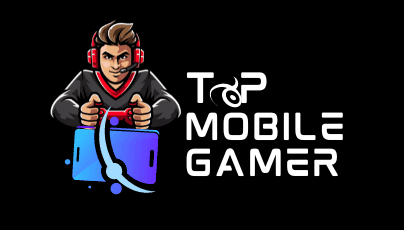The mobile gaming industry has expanded rapidly and now accounts for roughly 52% of the video game market’s revenue as of 2023 (see sources for verification). Smartphones, faster mobile networks, and more powerful devices have turned mobile games into platforms for entertainment, learning, workplace training, and even healthcare simulations.
There’s truly a game for everyone — from quick quizzes and hyper-casual time-wasters to deep Role-Playing Games (RPGs) and complex strategy titles. Developers and analysts play a central role in shaping this market: they design games that fit diverse play styles, optimize monetization and retention, and ensure games can be used productively in education, business, and clinical settings. In this article we’ll explore the major genres, market trends, monetization strategies, and what the growth of mobile gaming means for players, developers, and the industry.
Key Takeaways
- Hyper-casual games remain a dominant download driver (billions of installs annually), demonstrating that lightweight, accessible gameplay continues to resonate with global mobile users.
- Strategy titles command outsized consumer spending (multi‑billion dollar categories), showing that deep mechanics and long-term engagement translate into strong revenue.
- Casual game downloads are projected to continue rising, reinforcing the mass‑market reach of mobile games across demographics.
- Puzzle and brain‑training genres retain broad appeal, with a large share of smartphone users engaging with these titles for short, daily sessions.
- Simulation and story‑driven games are growing in both downloads and engagement, highlighting their potential for narrative depth and educational use.
- Monetization in hyper‑casual and casual segments relies heavily on ad revenue and user session volume, while strategy and RPG categories drive in‑app purchases and subscription models.
The Surge of Mobile Gaming in the Digital Era
The rapid growth of mobile gaming has been fueled by more powerful mobile devices, ubiquitous high‑speed internet, and an expanding base of global mobile users. This expansion reshaped the broader gaming industry: mobile gaming now represents the majority share of the gaming market in many reports (see market report sources for exact figures and methodology).
To put the scale in context, mobile revenue ranged in the tens of billions of dollars in recent years (for example, industry reports have cited figures like $79.5 billion for 2020), and analyst forecasts project the mobile gaming market to grow substantially through 2030—some estimates place market size in the low hundreds of billions by that year. These figures vary between providers, so link the specific market report you rely on when publishing.
Recent app‑economy snapshots show a high concentration of revenue among top titles and genres: a large proportion of the most profitable app listings are games, and in‑app purchases plus ad monetization remain the principal revenue levers for developers across app stores.
Genre dynamics matter: strategy and puzzle games generate strong lifetime value from engaged players, RPGs and simulations drive retention through content depth, and hyper‑casual titles generate scale through downloads and frequent short sessions. Social features—clans, guilds, in‑game chat, and leaderboards—have become common in the top‑earning mobile games, helping convert casual downloads into repeat users.
- Regional trends: Asia‑Pacific continues to be the largest regional market by revenue and downloads, while North America and Europe contribute strong monetization per user.
- Market headwinds: privacy changes (such as updates to IDFA and ATT) and rising UA costs have impacted ad targeting and user acquisition strategies for developers.
Despite challenges, the market trends point to continued growth: rising device capability, 5G rollout, and the expanding global user base all support a favorable outlook for mobile gaming. For business readers and developers, consult a recent market report for granular regional breakdowns, forecasted market expected numbers, and actionable monetization benchmarks.
Hyper-Casual Games: Simplicity Meets Engagement
Hyper-casual games are lightweight, instantly accessible experiences built for short sessions on mobile devices. Their simple controls and low friction make them ideal for quick breaks — a key reason they scale to massive numbers of downloads and daily users among Gen Z and casual mobile gamers.
Because smartphones are ubiquitous, hyper-casual titles reach broad audiences quickly. Classic exemplars of the category include minimalist hits such as Flappy Bird and modern phenoms like Helix Jump or Stack — titles designed around a single, easy-to-learn mechanic that encourages repeated short plays.
Defining the Hyper-Casual Phenomenon
Hyper-casual games typically have short session lengths, a single core loop, and low production cost, enabling rapid prototyping and frequent releases. This low barrier to entry helps developers test concepts quickly and chase viral success. Unlike midcore or deep casual titles, hyper-casual games prioritize immediate gameplay over long-form progression systems.
Note: Candy Crush and Fruit Ninja were historically major mobile successes, but they sit closer to the broader casual category due to deeper progression systems and monetization models; keep those distinctions clear when categorizing top titles.
The Psychology Behind Hyper-Casual’s Popularity
Rather than labeling these games “addictive,” describe their design as optimized for high session frequency: short reward loops, simple goals, and rapid feedback encourage many repeat plays per day. This design appeals to short attention spans and users who want quick satisfaction. Ethically-minded developers balance engagement with respectful monetization and clear session boundaries.
Monetization Strategies Within Hyper-Casual Games
Monetization strategies for hyper-casual games rely primarily on advertising (video interstitials, rewarded ads, and programmatic banners) combined with occasional in‑app purchases. Because retention tends to be lower than in deeper genres, developers focus on maximizing ad RPM and CPM through high session volumes and optimized ad placements rather than heavy reliance on in‑game purchases.
Developers should watch the trade-off between ad load and user experience carefully: overloading players with ads can reduce lifetime value despite higher short‑term RPMs. For practical guidance on building and monetizing hyper‑casual titles, see this development guide: Hyper-Casual Game Development Guide.
In short, hyper-casual games are a crucial part of the mobile games ecosystem: they drive downloads and scale, introduce new users to mobile gaming, and offer predictable monetization through ads — making them a key segment for many mobile developers.
Strategy Games: Mastering the Art of Tactical Play
Strategy mobile games stand out in the mobile gaming landscape for depth, long-term engagement, and higher lifetime value per player. These titles reward planning, resource management, and decision-making — mechanics that appeal to players who prefer slower, more deliberate gameplay compared with one-touch hyper-casual experiences.
Real-Time Strategy (RTS) mobile games demand fast reflexes and continuous decision-making in live matches, while Turn-Based Strategy games let players plan moves carefully and consider long-term consequences. Both formats offer distinct competitive and solo-play experiences that attract different player types.
Strategy mobile games frequently combine resource management, territory control, and tactical combat — creating sessions that test both analytical thinking and patience.
- Wargames: Simulate large-scale conflicts where logistics, unit composition, and long-term planning determine victory.
- Tower Defense: Center around map positioning and upgrade paths to survive waves of enemies; these are often approachable for casual players but deep in optimization.
- Multiplayer Battle Arenas: Fast-paced, team-oriented matches that emphasize coordination, meta-knowledge, and quick strategic choices.
- 4X Games: (Explore, Expand, Exploit, Exterminate) Focus on empire management — diplomacy, economy, and warfare — and reward patient, strategic play.
Beyond combat, many strategy mobile games integrate economy systems, tech trees, and procedurally generated elements that boost replayability. Hybrid sub-genres — such as tactical RPGs — blend character progression with strategic combat, drawing in players who enjoy both narrative and complex mechanics.
Monetization in strategy games typically combines in‑app purchases (fast progress, premium cosmetics, battle passes) with live‑ops events that sustain long-term engagement. Because strategy players invest more time per session, game developers can monetize through depth (seasonal content, expansions) rather than relying primarily on ad revenue. Successful titles often show strong retention and predictable revenue streams; for example, several top strategy franchises consistently appear among the highest grossing mobile games in regional charts.
For game developers focusing on strategy titles, prioritize balanced progression systems, matchmaking fairness, and clear monetization that respects player time. As mobile gaming hardware and network quality improve, strategy games will continue to push for richer systems and cross‑platform play, cementing their role in the broader mobile gaming market.
Role-Playing Games (RPGs): Embodying Diverse Avatars
RPG mobile games deliver rich worlds and character progression that invite long play sessions and emotional investment. Modern mobile RPGs — from sprawling live-service titles like Genshin Impact to narrative-driven indies such as Stardew Valley — provide deep gameplay loops, social systems, and recurring content that keep players returning week after week.
The Endless Worlds of Mobile RPGs
Advances in mobile game development and device performance mean some mobile games now match console-level scope: larger open worlds, persistent live‑ops updates, and complex quest systems. These technical improvements enable high-fidelity visuals and expansive content that can support millions of players and drive significant revenue over time.
Top mobile RPG mechanics
Common systems include leveling and progression trees, equipment and crafting, party composition, and base/building management. Many RPGs also layer in social mechanics (co-op dungeons, guilds) and meta‑systems — seasonal events, battle passes, and limited-time banners — to extend longevity and engagement.
Monetization and Player Retention in RPGs
Monetization in RPG mobile games often centers on in‑game purchases: gacha-style character pulls, premium currency, convenience items, and cosmetic bundles. Because RPG players typically exhibit higher retention and longer session lengths, developers can monetize via recurring content (seasonal updates, expansions) and subscription or battle‑pass models rather than relying solely on ad revenue.
For developers, balancing progression and fair monetization is crucial: transparent gacha odds, meaningful free progression, and a steady cadence of updates improve player trust and lifetime value. For players, those mechanics mean an evolving game world and ongoing reasons to return.
In short, RPG mobile games combine narrative depth, social features, and robust monetization models to form one of the most engaging and revenue-generating segments of the mobile games market.
Competitive Gaming on Mobile: The Rise of eSports
The landscape of competitive mobile games has evolved rapidly as more powerful mobile devices and faster networks make high‑quality multiplayer experiences possible on phones. Flagship titles such as PUBG Mobile and mobile adaptations of big franchises demonstrate that tournament‑level graphics and large-scale multiplayer are feasible on handheld devices — helping mobile eSports secure a meaningful place in the global eSports ecosystem.
Competitive mobile gaming lowers the barrier to entry for aspiring players: anyone with a capable smartphone can compete, stream, or practice on the same hardware used by casual players, which expands the pool of talent and viewership. That accessibility, combined with regional leagues and international tournaments, is a major driver of growth for mobile gaming as a whole.
- Infrastructure & tech: Improvements in mobile device performance, cloud servers, and 5G reduce lag and enable smoother competitive play — essential for fair, watchable matches.
- Tournaments & engagement: Mobile tournaments now feature sizable prize pools and professional production; marquee events and seasonal circuits have attracted millions of viewers globally, illustrating mobile competitive gaming’s reach.
Regional publishers and organizers play a big role in expanding competitive ecosystems. For example, Tamatem Games has helped grow tournaments and community initiatives in Arabic‑speaking markets and has participated in events such as multiregional cups that raise the profile of mobile eSports in those regions.
However, the mobile eSports space faces challenges: device fragmentation, anti‑cheat enforcement, and uneven connectivity can impact competitive integrity and viewer experience. Developers and tournament operators must invest in matchmaking, anti‑cheat systems, and broadcasting tools to ensure competition scales fairly.
“The global expansion of mobile eSports hinges not just on technological advancements but also on creating inclusive, engaging, and culturally relevant experiences that resonate with diverse players.” – Industry Expert
Looking ahead, innovations such as cloud streaming, AR enhancements, and machine‑learning powered anti‑cheat may further elevate competitive mobile gaming. For developers and players alike, the mobile eSports trend represents both a growing opportunity and a set of operational challenges to address as the global mobile gaming audience continues to expand.
Simulation Games: Echoes of Reality
Simulation games on mobile combine detailed mechanics with real‑world scenarios, delivering experiences that are both entertaining and instructive. From running a virtual farm to managing a city’s transit system, these mobile games let users experiment with complex systems in a low‑risk environment — a major reason they’ve grown popular with mainstream players and educators alike.
Simulation mechanics and user engagement
Simulation mobile games often feature layered systems (economies, resource flows, weather cycles, and NPC behaviors) that interact over long play sessions. This systems‑level design fosters deep engagement: players learn cause and effect, test strategies, and iterate on solutions — which increases retention and time spent in the app.
Examples include life simulation titles like BitLife, farm and community sims such as Stardew Valley (also available on mobile platforms), and management sims inspired by games like Cities: Skylines. Note that some of these examples are cross‑platform; when citing them, make clear whether you reference their mobile ports.
Educational simulations: learning through play
Simulation games are increasingly used as edutainment and training tools. Classroom pilots and vocational training programs have used simulation apps to teach urban planning, systems thinking, and decision‑making. For instance, urban‑planning simulators help students visualize traffic flow and land‑use tradeoffs, while healthcare simulations provide safe environments for practicing clinical decision paths.
When simulation games are designed with learning outcomes in mind, they can improve problem‑solving skills, systems literacy, and collaborative decision‑making. Developers and educators looking to deploy simulations should collaborate on clear learning objectives, measurable outcomes, and accessibility for diverse users.
Opportunities for developers and revenue growth
From a business standpoint, simulation games can generate sustained revenue through live‑ops, DLC, premium expansions, and season passes because engaged users tend to stick around for content updates. As mobile devices and game development tools improve, developers can build richer simulations that drive longer lifecycles and stronger monetization.
In short, simulation mobile games bridge entertainment and practical learning: they engage users with realistic systems while offering developers a pathway to steady revenue growth and meaningful educational impact.
Adventure Games: Mobile Quests and Expeditions
Adventure mobile games combine narrative-driven design with puzzle solving and exploration to create immersive, story-first play sessions on phones. Advances in mobile game development and device performance let developers deliver richer characters, branching narratives, and atmospheric visuals that draw players into longer, more meaningful experiences.
Standout narrative adventures such as 80 Days and Machinarium (from Amanita Design) demonstrate how strong writing and unique art direction translate well to mobile platforms. These titles prioritize story pacing, environmental storytelling, and puzzle integration over rapid action, making them favorites among players who value plot and discovery.
Narrative design and player engagement
Adventure mobile games rely on clear pacing, memorable characters, and well‑designed puzzles to keep players engaged. Many use episodic content or chapters to structure progression, while live‑ops updates add new storylines or side quests to retain returning players. For developers, focusing on readable UI, adaptive difficulty, and strong voice/text localization improves accessibility across regions.
Engagement mechanics (energy, timers, and live‑ops)
Some adventure titles incorporate energy systems or timers to regulate session length and encourage return play; when implemented thoughtfully, these mechanics can improve long‑term retention without undermining narrative immersion. Responsive development—listening to player feedback, fixing pacing issues, and adjusting energy balances—helps studios keep players satisfied. The team behind titles like Road Trip: Royal Merge Adventure (as an example) often iterates on these mechanics to optimize progression and reduce player frustration.
As mobile hardware and engines improve, adventure games increasingly approach the production values of PC and console counterparts—especially in art, voice acting, and storytelling complexity. However, developers must balance ambition with performance and device variability to reach the broadest audience of mobile gamers.
The mix of stories and puzzles makes adventure mobile games very appealing.
In short, adventure mobile games offer players narrative depth, clever puzzles, and exploration on the go. With continued advances in mobile technology and thoughtful game development, this genre will keep growing in both quality and audience appeal.
Arcade Games: The Classic Genre Reimagined
Arcade mobile games revive the pick‑up‑and‑play spirit of coin‑op cabinets for modern mobile devices. By pairing simple, score‑focused gameplay with updated graphics, social features, and responsive touch controls, these titles bring old‑school immediacy to today’s players while fitting neatly into short play sessions.
Unlike their mechanical ancestors, mobile arcade games benefit from persistent online features — leaderboards, daily challenges, and social sharing — that extend replay value and community engagement without changing the core high‑score loop.
From coin‑ops to touch screens
Arcade design principles (instant feedback, high skill ceilings, and clear scoring) translate well to phones. The interface shifted from joysticks and buttons to taps and swipes, but the core appeal remains: easy to learn, difficult to master. Modern ports and remasters of classics such as Tetris and Pac‑Man add polished visuals, new modes, and social features to appeal both to nostalgic players and new users.
Arcade hits adapted for mobile entertainment
Successful mobile arcade titles balance fidelity to original mechanics with modern expectations — improved touch controls, optional assist modes, and monetization that doesn’t undermine competitive play. These games often use monetization strategies like cosmetic buys, battle passes, or one‑time premium purchases rather than intrusive ad models, helping preserve the fast‑paced experience.
Exploring Different Kinds of Cellphone Games Across Genres
The mobile gaming experience now spans many mobile game categories, from short hyper‑casual bursts to expansive RPGs. Understanding these genres helps players find the right experience and helps developers target the right market segment.
- Hyper‑casual games: Quick, low‑barrier sessions that drive downloads and broad reach.
- Strategy & MMORPGs: Require longer play sessions, social coordination, and deep progression.
- Puzzle & simulation games: Offer cognitively engaging mechanics and often serve educational or therapeutic use cases.
- Competitive eSports: Rapidly growing, delivering structured competition and spectator appeal similar to console and PC eSports.
Monetization across genres varies: some rely on ads and high download volumes, while others generate revenue through in‑app purchases, subscriptions, or live‑ops content. This diversification of monetization strategies supports the overall mobile gaming market and contributes to the platform’s growing market share.
For players seeking new titles, sites like nandbox and curated lists on Top Mobile Gamer are helpful starting points. Whether you prefer quick scores or long narratives, today’s mobile game categories offer something for every kind of gamer.
Puzzles and Brain Teasers: Sharpening Minds on the Go
The rise of puzzle mobile games and brain games reflects a demand for short, mentally stimulating play sessions that fit into daily routines. These titles combine entertainment with cognitive training—improving skills like working memory, attention, and problem solving while delivering quick bursts of fun for users on mobile devices.
Apps such as Good Sudoku focus on classic puzzle formats that strengthen core skills, while platforms like Peak offer curated sets of brain games developed with input from neuroscientists to target specific cognitive domains. These examples show how puzzle and brain games can deliver both engagement and measurable benefits when designed with adaptive difficulty and evidence‑based exercises.
The Cognitive Benefits of Puzzle-Based Mobile Games
Puzzle mobile games like Lumosity and Elevate adapt to a player’s level, offering progressive challenges that can improve memory, processing speed, and concentration over time. Research and app‑based assessments suggest that targeted, regular play—especially in adaptive formats—can produce modest cognitive gains; cite clinical or academic sources when making specific efficacy claims.
Popular Puzzle Game Mechanics and Their Impact
Mechanics that drive puzzle engagement include progressive levels, pattern recognition, spatial reasoning challenges, timed modes, and daily workout routines. Social features—leaderboards, friend challenges, and cooperative puzzle modes—can increase adherence and encourage regular play. Titles like Scrabble GO support vocabulary building and strategic thinking, while smaller apps such as Patternz emphasize scalable difficulty for broad appeal.
- Scalability: Adaptive puzzle systems allow the same app to serve beginners and advanced players, expanding audience reach.
- Accessibility: Offline play and low hardware requirements make many puzzle games widely accessible across regions.
- Diversity: A broad range of puzzle genres—logic, word, number, and pattern games—ensures there’s something for every player.
Overall, brain games blend fun with learning, and when paired with rigorous design and proper claims, they can become valuable tools for both casual players and those seeking cognitive training.
Conclusion
The mobile gaming market is vast and diverse, spanning simple hyper‑casual hits to deep RPGs and competitive eSports. Worldwide, mobile games represent a large and growing share of the global gaming industry—estimates vary by report, so always reference the specific market report you cite when quoting figures like market share or market size.
Analysts expect continued revenue growth and user expansion as device capabilities and network coverage improve; some forecasts project the mobile gaming market to expand substantially through 2030. Asia‑Pacific remains the largest regional contributor to downloads and revenue, while North America typically shows high monetization per player. Specific country trends (for example, mobile adoption rates in South Korea or rising usage statistics in Finland and Belgium) should be cited with up‑to‑date regional reports.
Mobile games fit busy lifestyles by offering short, satisfying sessions, but the industry must also address player well‑being: screen time management, age‑appropriate monetization, and responsible design are important considerations for developers and regulators alike. For developers and business readers, download a current market report to see projected reach, regional forecasts, and monetization benchmarks relevant to your strategy.
In short, the future of mobile gaming looks bright—driven by innovation in game development, expanding global user bases, and evolving monetization strategies—so long as the industry balances growth with player safety and accessibility.
























